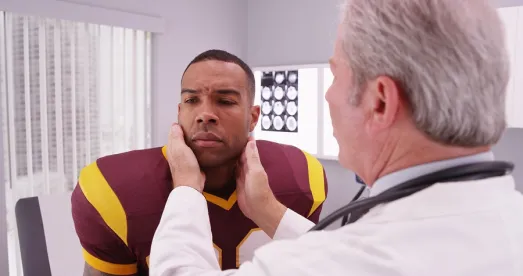In a decision of first impression, the U.S. District Court for the Central District of California granted defendant’s motion for summary judgment against negligence and wrongful death claims brought by the estates of two young men in Archie v. Pop Warner, USDC CD CA 2:16-cv-06603.
Archie was brought by the mothers of two former youth football players, each of whom died in their mid-twenties, a decade after they last played youth football; one died from a self-inflicted gunshot wound, the other in a motorcycle accident. The mothers sued for money damages and to enjoin advertising that “youth tackle football is safe for minor children.” Front and center in the complaint are allegations that exposure to repetitive contact leads to chronic traumatic encephalopathy (CTE), the disease process found at autopsy of the brains of football players Aaron Hernandez and Junior Seau. The plaintiffs in Archie each claim that their son had CTE as the result of playing youth football, and this led to the behavior that ended their lives. Worth noting: each played football in high school, one played into college and the one who died by self-inflicted gunshot wound was diagnosed with bi-polar disorder and was subject to six psychiatric holds.
Drawing from the decision that approved the NFL class action settlement, the court observed that to prevail, plaintiffs need to show both general causation (that repetitive head trauma is capable of causing the claimed injury) and specific causation (that the brain trauma suffered by a particular player in fact caused his specific impairment).
At deposition, plaintiffs’ neuropsychiatrist testified he had no specific basis to conclude the decedents suffered head trauma playing Pop Warner football “aside from the fact that people playing football have head trauma.” Observing that Plaintiffs offered no explanation of how, given evidence of significant other independent factors, the expert found participation in Pop Warner a substantial factor in their death, the court found his opinion “unreliable” and that it should be excluded under Daubert v. Merrell Dow Pharm., Inc., 509 U.S. 579, 590 (1993).
Exercising its gatekeeper function, the court observed the issue of causation may be decided as a question of law only if there is no room for a reasonable difference of opinion. “A force which plays only an ‘infinitesimal’ or ‘theoretical’ part in bringing about injury, damage, or loss is not a substantial factor.” Rutherford v. Owens-Illinois, Inc., 16 Cal. 4th 953, 969 (1997). The plaintiff must prove “there is a reasonable medical probability based upon competent expert testimony that the defendant’s conduct contributed to plaintiff’s injury.”
The court credited the testimony of plaintiff’s original expert neuropathologist, that he could not opine about the clinical significance of Stage I CTE because there has not been enough study to link clinical or psychological history with CTE, over a declaration from the noted pathologist Bennet Omalu that failed to explain how he arrived at the conclusion “Pop Warner Football” was a “substantial factor.” The court also credited the original neuropathologist’s testimony that there was no reason to believe the motorcycle death was anything but an accident, and that he cannot opine as to whether CTE was the cause of death in either decedent.
“The Court concludes that there is not a sufficient evidentiary basis that Pop Warner’s alleged negligence in connection with Pop Warner Football, to the exclusion of high school football, other experiences, social or biological factors, was a substantial factor in [motorcycle accident]. Plaintiffs essentially argue that any child that plays Pop Warner football, simply by virtue of participating, without any documentation of head trauma, if found with CTE post-mortem, has a viable cause of action based on any occurrence as a result of recklessness or mood behaviors in that person’s life. The Court does not agree that this satisfies the factual causation standard.”
Judgment was granted in a well-reasoned 20-page order, four days after oral argument.




 />i
/>i
